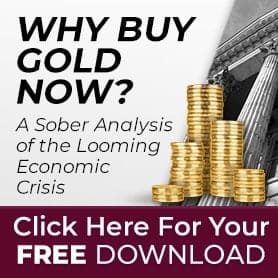- All the talk last week in the financial media was the fact that several Federal Reserve officials had given speeches somehow putting April back on the table as a live FOMC meeting, where the Fed might raise rates
- In fact, even earlier this week, even yesterday, an official from the Federal Reserve Bank of San Francisco commented that the Fed should continue with rate hikes because the economy is strong and the data is on target
- I did not buy those comments for one second – my last podcast was titled, “Fed Bankers Bark But Won’t Bite“, and my commentary was titled, “Two Down and Two to Go” meaning that the Fed had already dispensed with two of the 4 rate hikes telegraphed for 2016 and they would take the other 2 rate hikes away
- So, as everybody else was anticipating rate hikes, I was saying, not only are they not going to raise them in April, they are not going to raise them at all in 2016
- What happened today? Janet Yellen gave a speech to the Economic Club of New York, one of the most dovish speeches, if not the most dovish she has ever given
- As a result of the speech, the price of gold was up about $20 on the day; we closed above $1240
- In fact a couple of days ago, we had gotten nearly down to $1200
- That shows you the strength of this bull market in gold, despite the talk of a rate hike in April, and despite the rally in the dollar, gold held its position above $1200
- To me, that’s very bullish, the question when will all the bears throw in the towel?
- Goldman Sachs is still looking for gold to hit $1000 – $900
- They’re still looking for a strong dollar and a bunch of rate hikes
- Although Goldman Sachs is not as bearish on gold as Harry Dent
- Harry Dent called for $700 gold when I debated him on Friday’s Alex Jones show
- That was a good debate, and you can check it out on my YouTube channel
- The dollar was down across the board today
- The dollar index barely held on to the 95 handle, it closed at 95.15, off not quite a full percentage point on the day
- Aussie dollar very strong on the day, up 1.4%
- New Zealand dollar was the big winner on the day; that currency was up a full 2 percentage points on the day against the U.S. dollar
- The Dow Jones liked the dovish news coming from the Fed; up just under 100 points
- One of the reasons it wasn’t up more is because of the financials in the Dow weighing it down
- The NASDAQ was up 79.8 – that’s a 1.7% increase
- The NASDAQ was standing still compared to the gold stocks – the GDX up 5.77%
- The GDXJ, the juniors, were up even more – about 6.3% today
- That’s where the action was and I think it will continue to be, based on Janet Yellen’s Dovish remarks
- I still don’t think the conventional wisdom appreciates the extent of these dovish remarks
- Let me go over her remarks; she started with a pretty upbeat assessment on the economy
- She said the labor market is looking good, consumer spending is looking good, the housing recovery continues – she went over all these positives
- She did list some minor negatives: Manufacturing and Net Exports, but she blamed all that on the strong dollar
- She did also mention that capital spending and business investment was lackluster, noting in particular weakness in layoffs in the energy sector
- But overall she was still upbeat on the economy
- In fact, she admitted that the Fed’s assessment of economic growth, inflation, and unemployment were exactly the same on December 2015, when they raised rates, and in the March meeting, where they didn’t raise rates
- She said the Fed’s outlook on the economy had not changed at all
- If it hasn’t changed at all, why didn’t they raise rates again?
- They were telegraphing 4 rate hikes, and if all their assumptions about the economy had stayed the same, they why didn’t we get the rate hike
- She actually mentioned that in the Q&A
- There weren’t a lot of questions; there were two people allowed to ask questions – two economists
- Yellen did mention that financial conditions were weaker between December and March, obviously referring to the stock market having gone down, although she acknowledged that it came back up
- Also referred to developments in global economies that would normally be weighing down on the U.S. economy, but because the weakness abroad ended leading Americans to anticipate a lower Federal Funds rate and that pushed down long-term interest rates, which is helping the housing market
- She kind of acknowledged that the only reason that the weakness abroad isn’t impacting us, is because that weakness isn’t impacting us is because that weakness caused people to realize the Fed wasn’t going to hike rates, and because they’re not hiking rates, that helped the housing market, which is helping the U.S. economy
- Which is an admission that what the Fed is looking at is the financial markets, not necessarily the real economy, because the real economy hasn’t changed, yet she admitted in the speech that the Fed now sees a rate path trajectory of rate hikes that is slower, more cautious and more gradual than they saw in December
- This is the first time they’re admitting it – it’s not just the dot plots
- Janet Yellen is saying that even though our assessment of the economy hasn’t changed, we now see a more shallow glide path, we expect that over the coming years, interest rates are going to be raised more slowly
- What she did say is that the Fed now believes that the “neutral rate” is near zero for the Fed Funds rate, which means the Fed Funds rate, minus inflation, meaning the rate where the Fed is not stimulative nor restraining economic growth, not loose or tight, the “neutral level” is now closer to zero than what the Fed originally believed
- Janet Yellen did mention inflation and her main concern is that it wouldn’t be high enough
- That’s the one thing that concerns her is that inflation expectations are too low and they may take too long to get back up to 2%
- In her prepared remarks, she mentioned that if the economy weakened or if inflation is lower than the Fed is hoping
Podcast: Download










